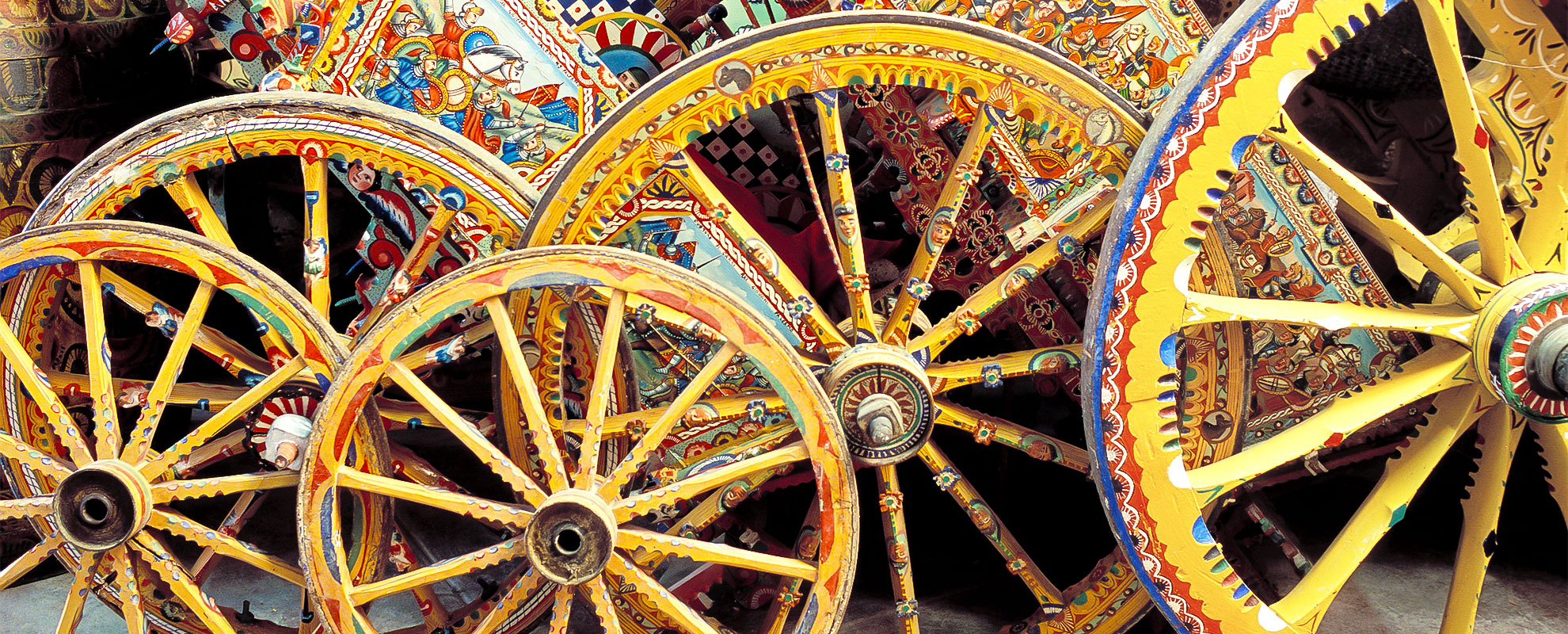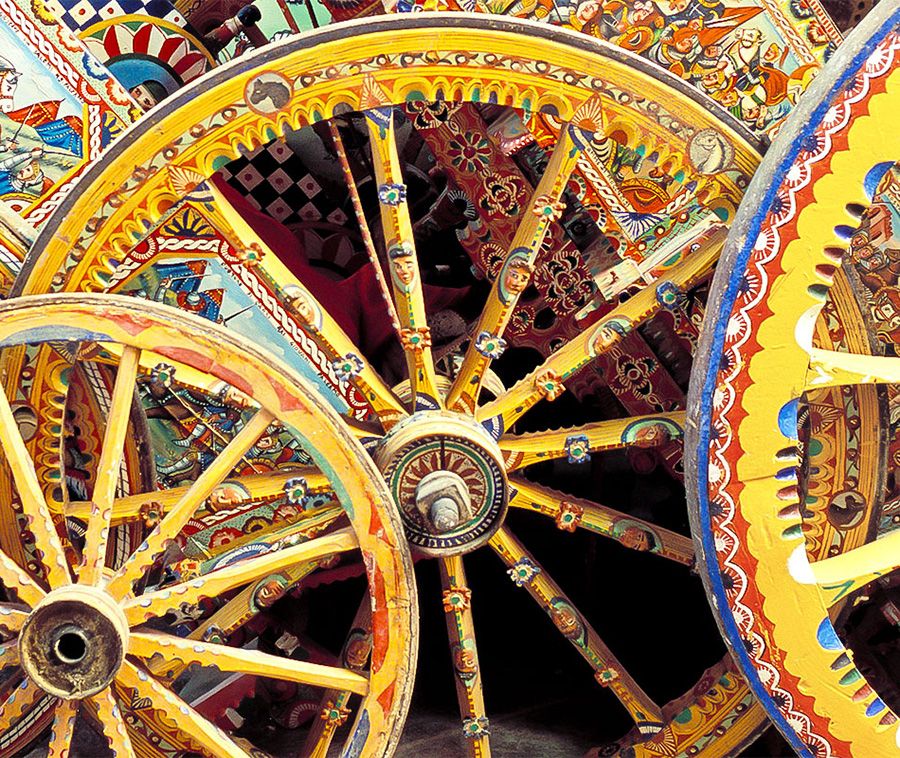A means of transport shaped by tradition and a repository for stories and memories: discover the origins of the Sicilian cart.
One of the best-known symbols of Sicilian folk iconography, the cart was created as a means of transport that responded to practical needs but went on to be transformed into a vehicle for cultural transmission. Sculpture and painting were applied its various constituent parts to represent moments from the island’s history, or from epic stories or popular religion, creating valuable constructions that were genuine traveling works of art. Discover the beauty of this thoroughly Sicilian tradition.
The Sicilian cart is closely linked to the history of the island, but is hasn’t always existed, not least because the deterioration of the road network after the fall of the Roman Empire made two-wheeled vehicles almost unusable. It was only at the beginning of the nineteenth century that the cart began to be widespread, as prior to then all trade and transport were generally carried out by sea. From that moment on the horse-drawn cart began to be used to transport wood and agricultural products, such as sacks of grain, legumes, citrus fruits, almonds and wine barrels. Its use for transportation declined in the second half of the twentieth century, however, with the increasing popularity of motor vehicles, but, as we shall see, it continues to work its charms on popular sensibility and tourists.
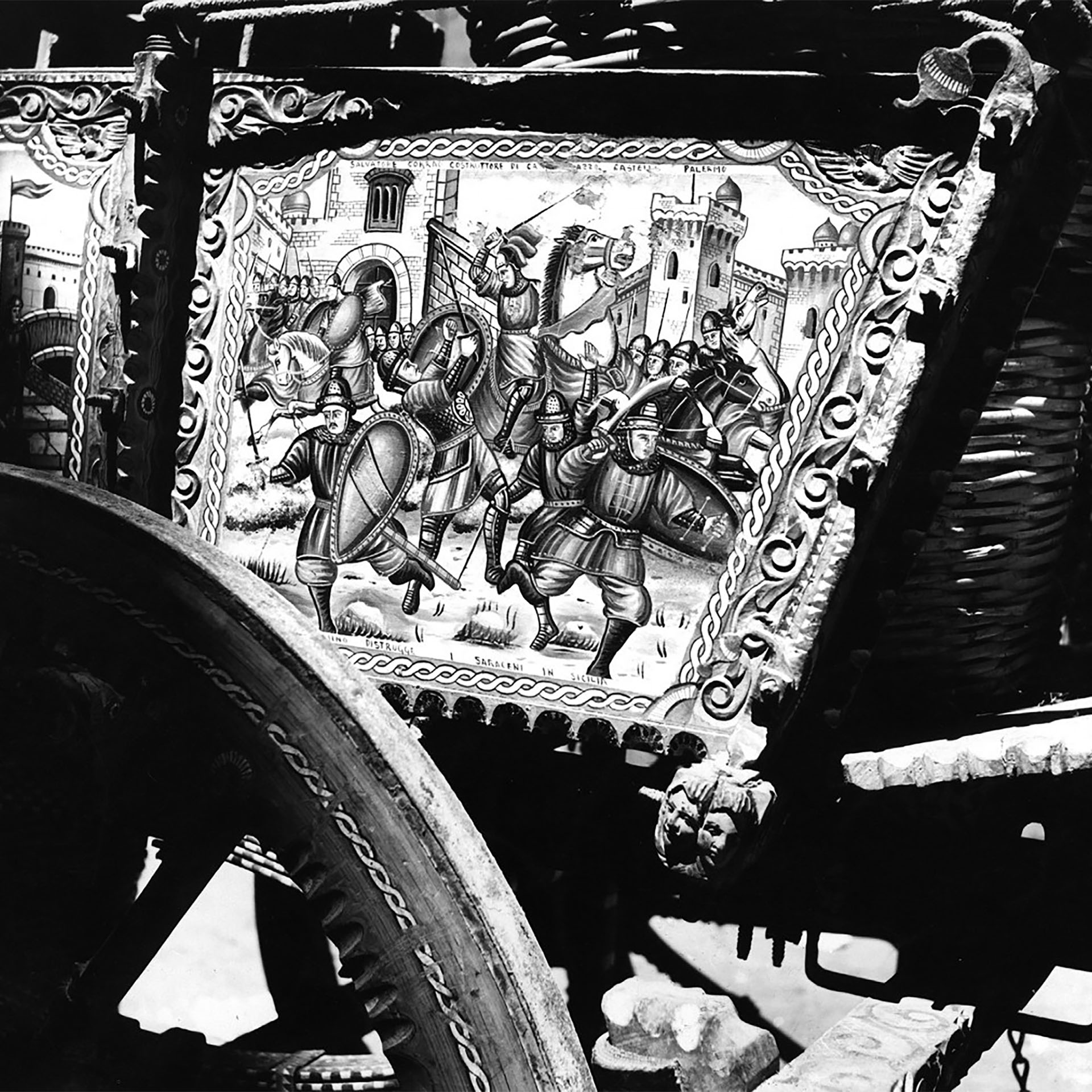
The cart may be rather diminutive in size but because of its complexity, with the various parts encoded in a precise manner in terms of their shape, structure and decoration, it required a large number of craftsmen and skills. Creation of a cart necessitated a complex organisation of tasks and involved multiple groups of artisans with different specialisations. It was the product of several trades: a carver would create all the wooden parts (using various types of wood, such as walnut or beech), a blacksmith took care of wrought iron elements, a “carradore” (carter) assembled the various parts and a painter would decorate all the surfaces that could be painted (the parts that best lent themselves to this were the cart’s walls, where it was possible to depict entire scenes).
The painting on the carts had its own precise style: all the characters represented in the scene were placed in the foreground, with an elementary, stylised and simple perspective. The figures were generally two-dimensional and the colours were typically very bright, without shading or nuance. With their concentrated creativity and meticulous techniques, attention to detail was the watchword of the artistic woodcarvers and decorators when facing the challenge of carving and then decorating all the sides of the cart. As such, even a purely mechanical part like the wheel became an enchanting work of art. The wood could even be sculpted into battle scenes highlighted by the many bright colours.
Although it is much rarer now, the knowledge of these artisans has not disappeared as it was closely guarded and handed down over time, from father to son. It is rich and complex skill, kept alive by a tradition of craft families.
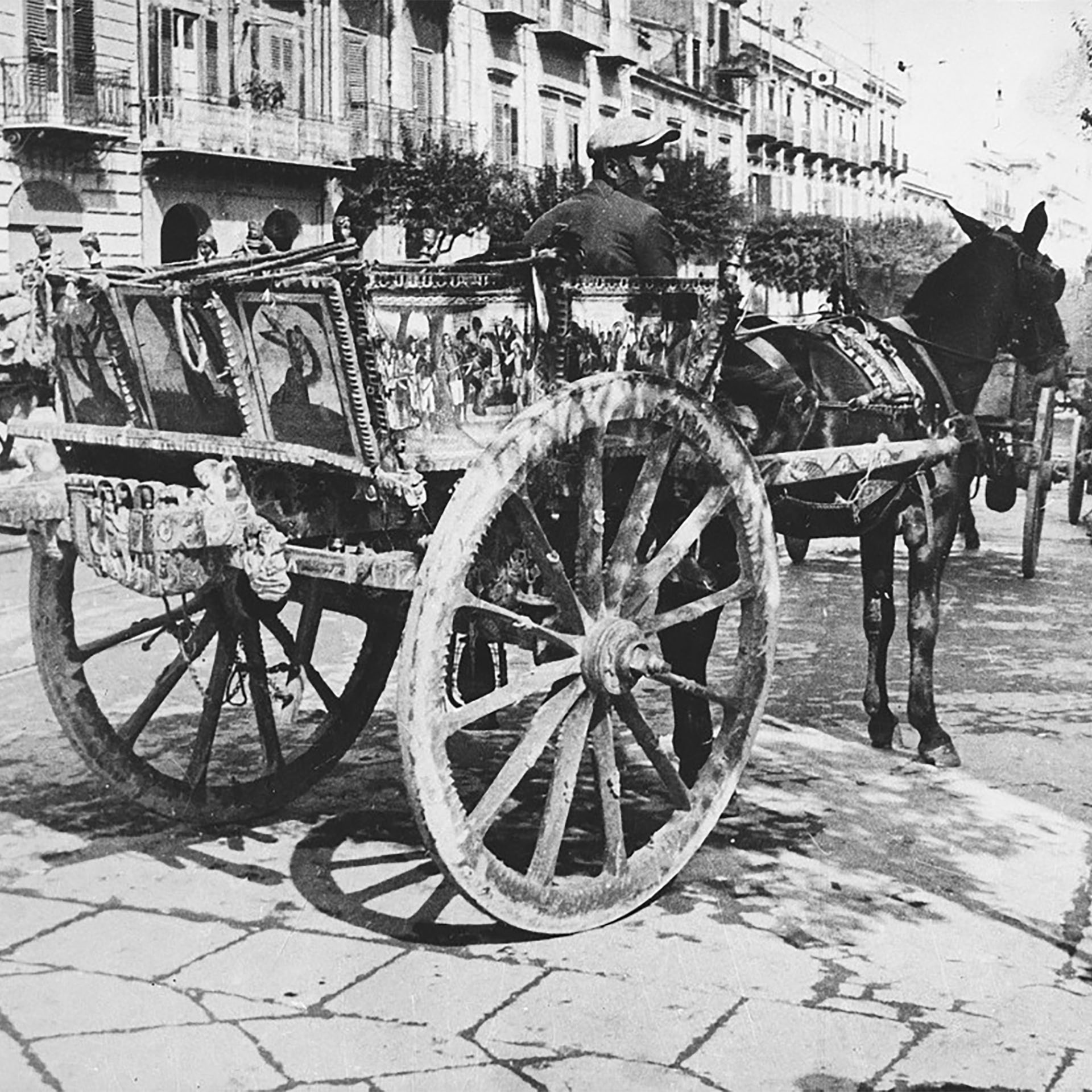
The cart was a means of transport that combined functionality with the telling of stories and tales, serving as a kind of wandering picture book that variously depicted historical, literary, religious, or chivalrous events. The custom of painting the various parts of the cart took hold and became a tradition because it fulfilled several functions: it served as a form of protection that preserved the wood in the cart for longer, but also had a superstitious function as the scenes depicted (which were often religious) were considered auspicious and endowed with a protective power, including the power to ward off bad luck and negative events. The paintings could also be used as advertising, especially for carts with a commercial function, as they were useful for drawing potential customers’ attention and acting as a status symbol showing off the wealth of the owner. Sicilian carts were characterised by a “mania” for decoration, distinguishable by the richness of the forms and colours that enveloped the cart, even the horse, and a desire to maximise the presence of colours and decorative effects that resulted in a truly remarkable chromatic explosion. In different areas of Sicily the cart had different shapes and colours. In the Palermo area, for example, the carts had a trapezoidal shape with yellow background and predominantly geometric decorations. In Catania, conversely, the cart had a rectangular shape with a red background and particularly intricate and detailed decorations.
Over the years the cart has lost its original purpose of transporting goods and has taken on a symbolic value as part of folklore, becoming the relic of a now endangered set of customs and traditions.
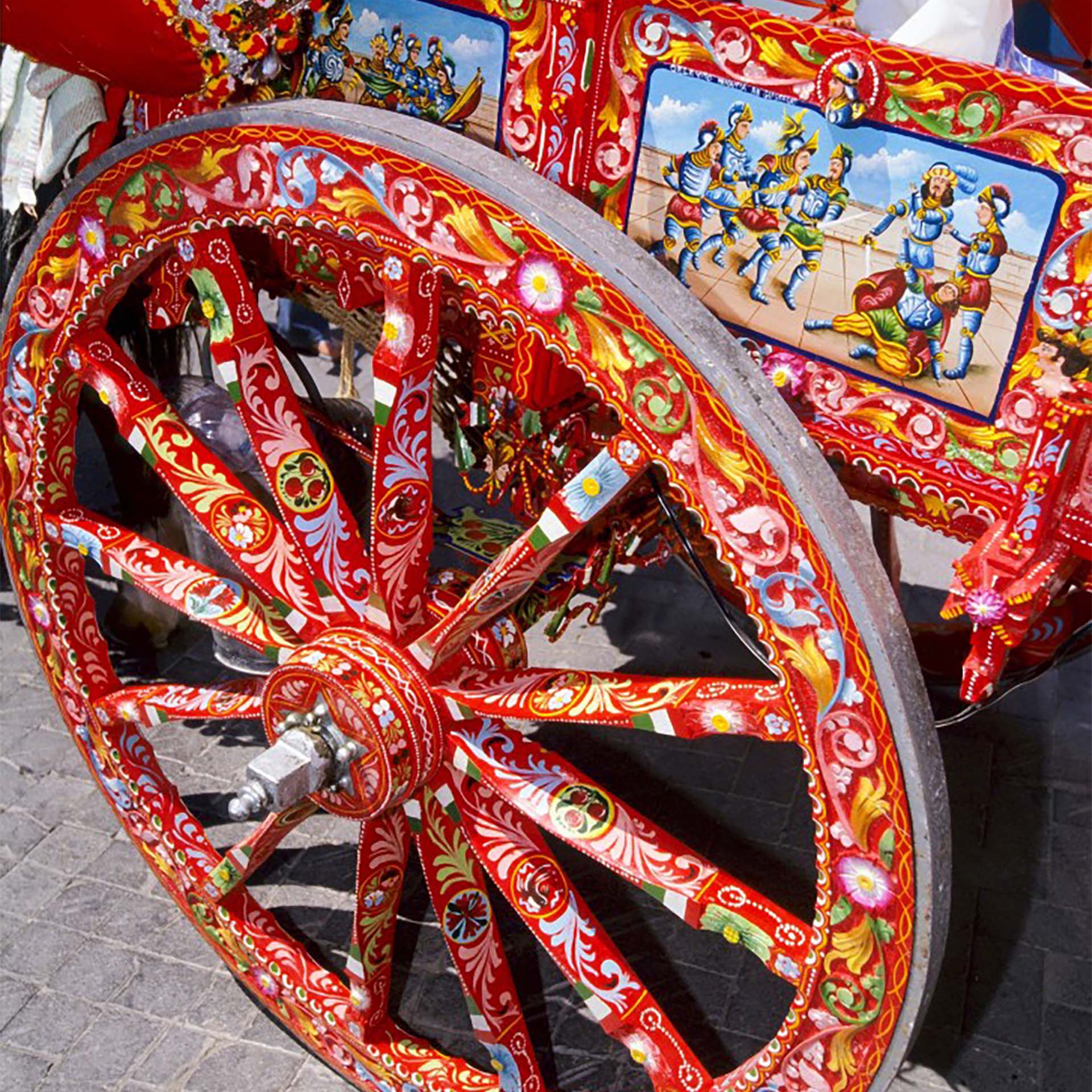
Today it is above all an object of craftsmanship and one of the symbols of the island’s popular culture. Currently the carts are used for events and special occasions and can often be admired at public festivals. One well-known example is that of S. Alfio, in Trecastagni, in the province of Catania, where carts leave from Catania and other surrounding areas at night and arrive in the morning to assemble in the village square. For those who would like to get to know the history of the Sicilian cart from close up, there are two museums dedicated to preserving the memory of this typical Sicilian tradition – Terrasini, in the province of Palermo, and Bronte, in the province of Catania.

